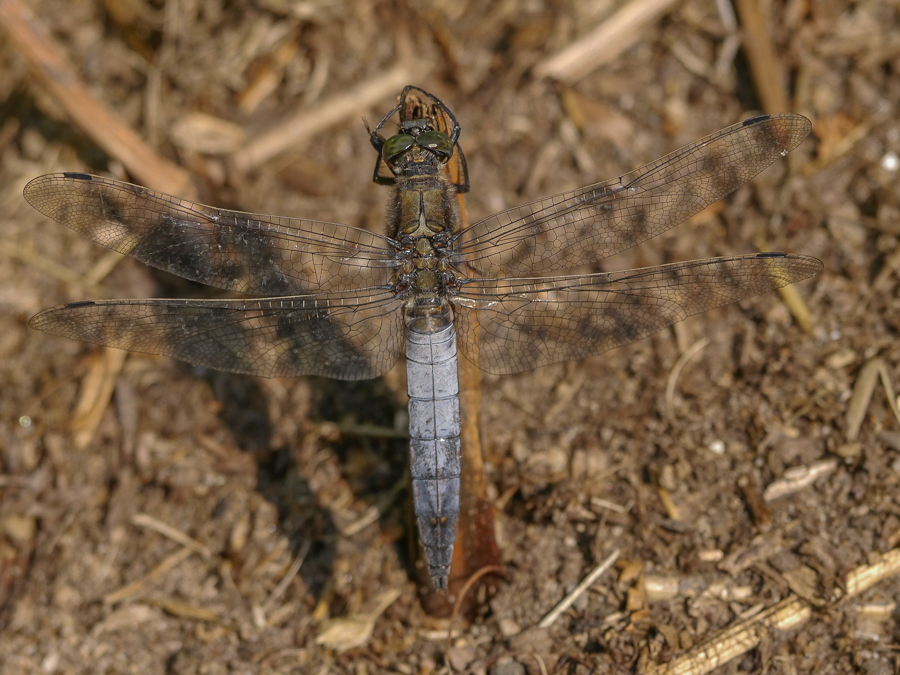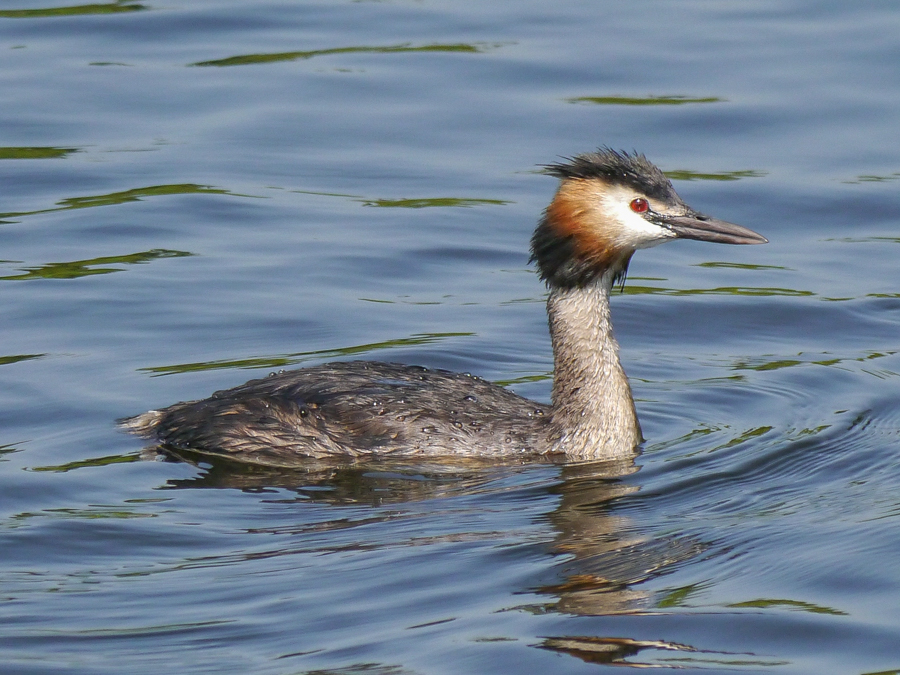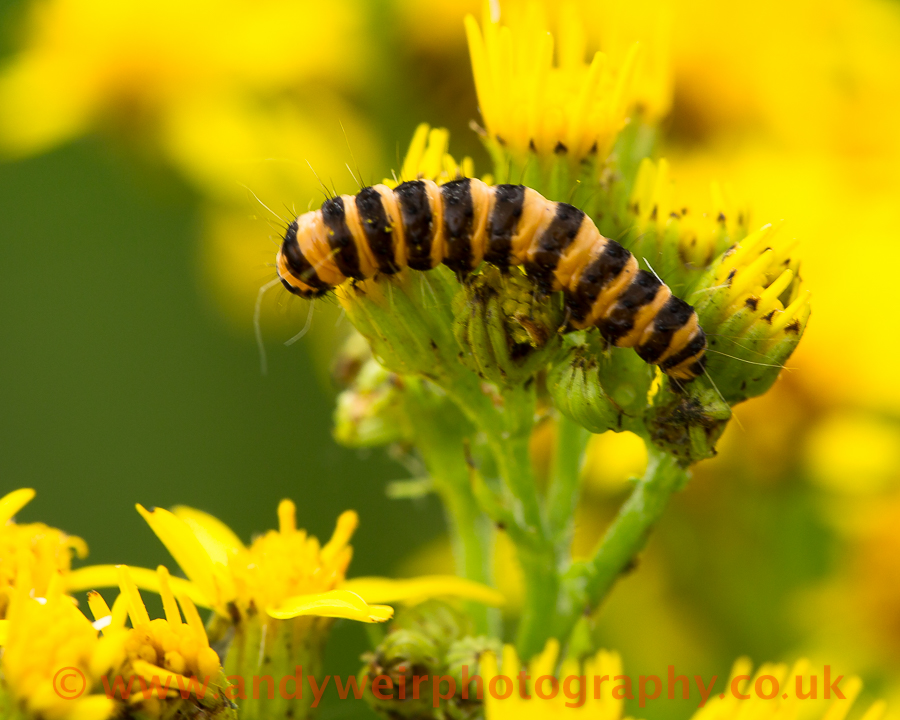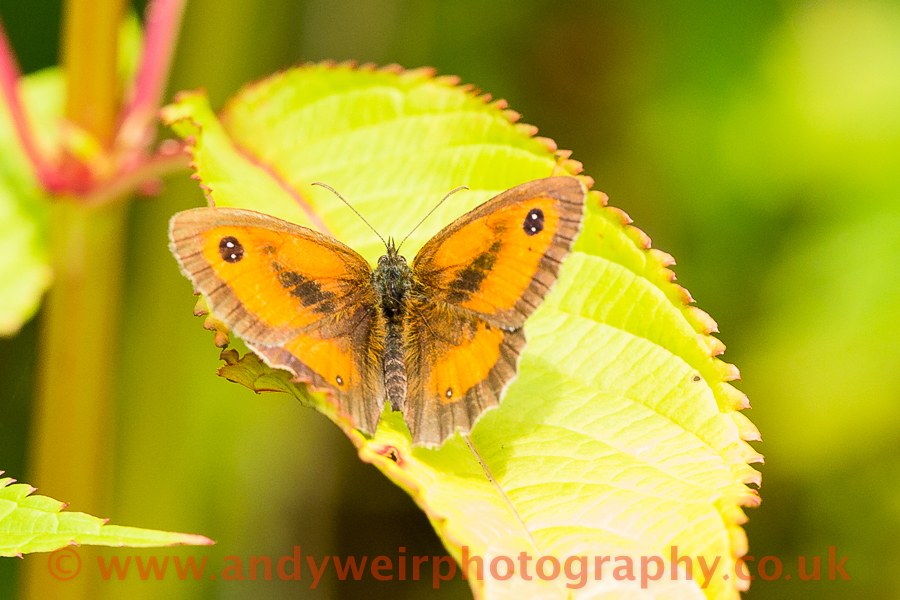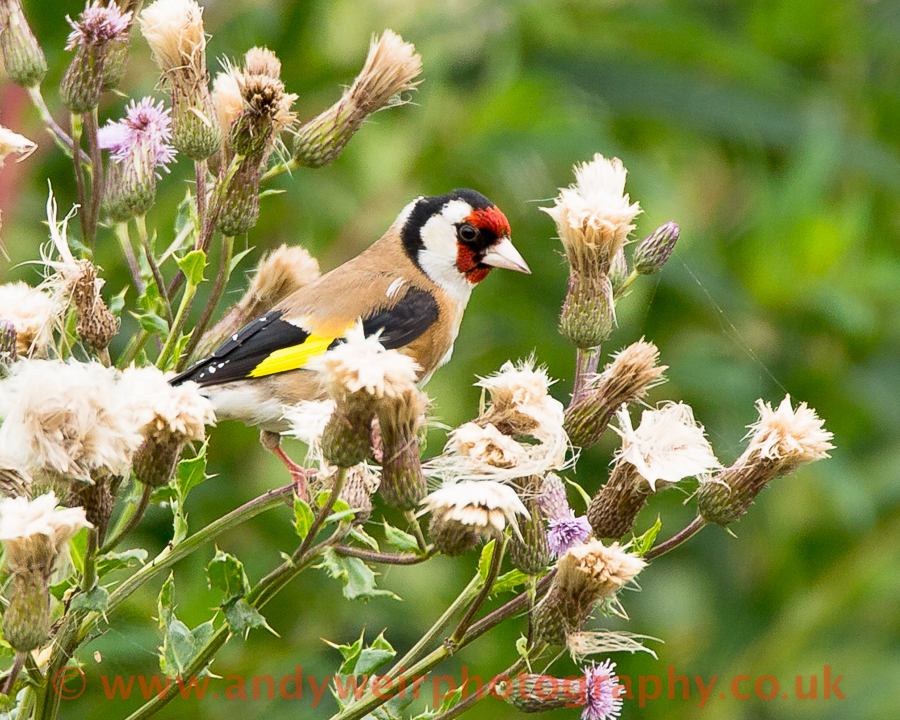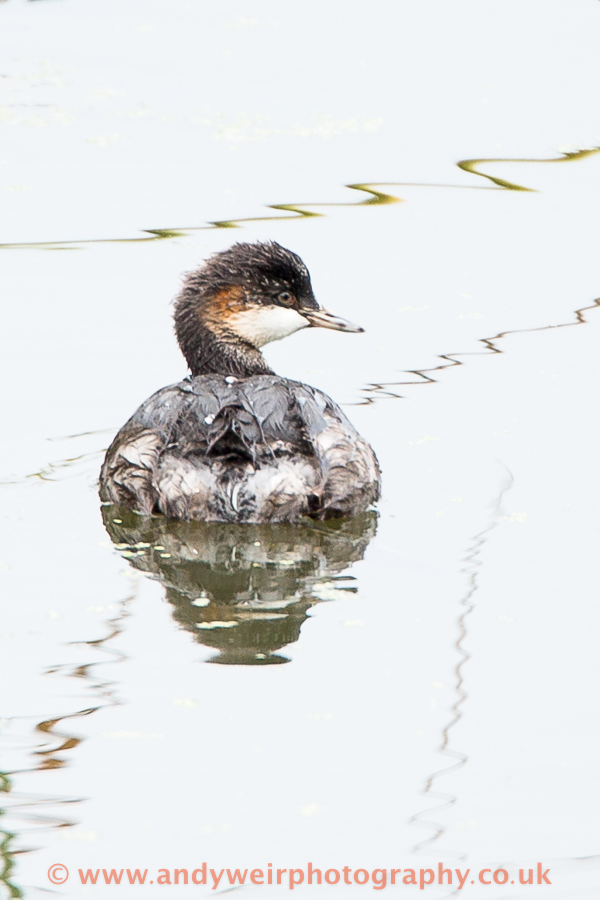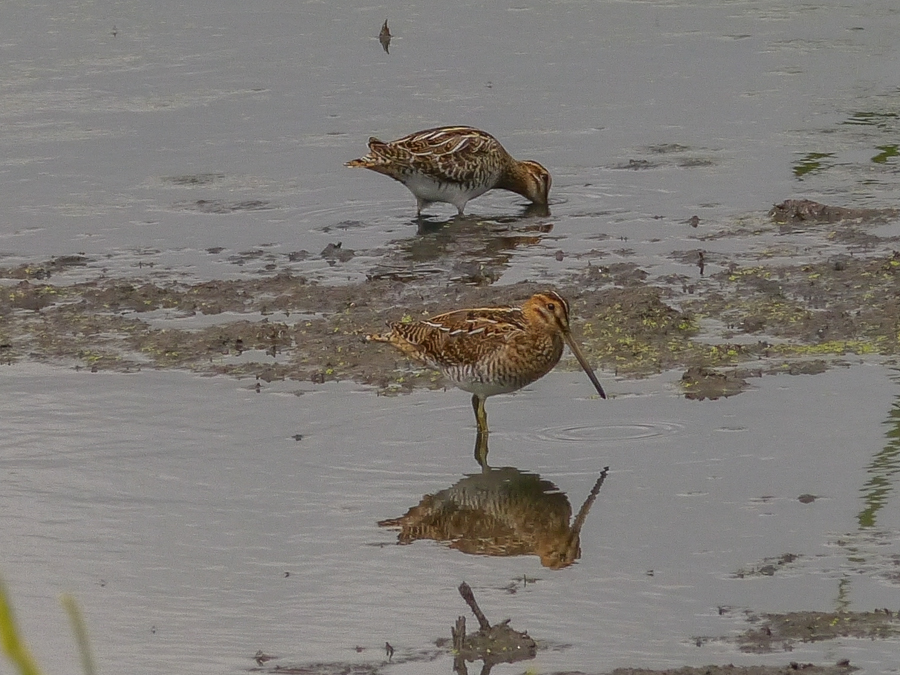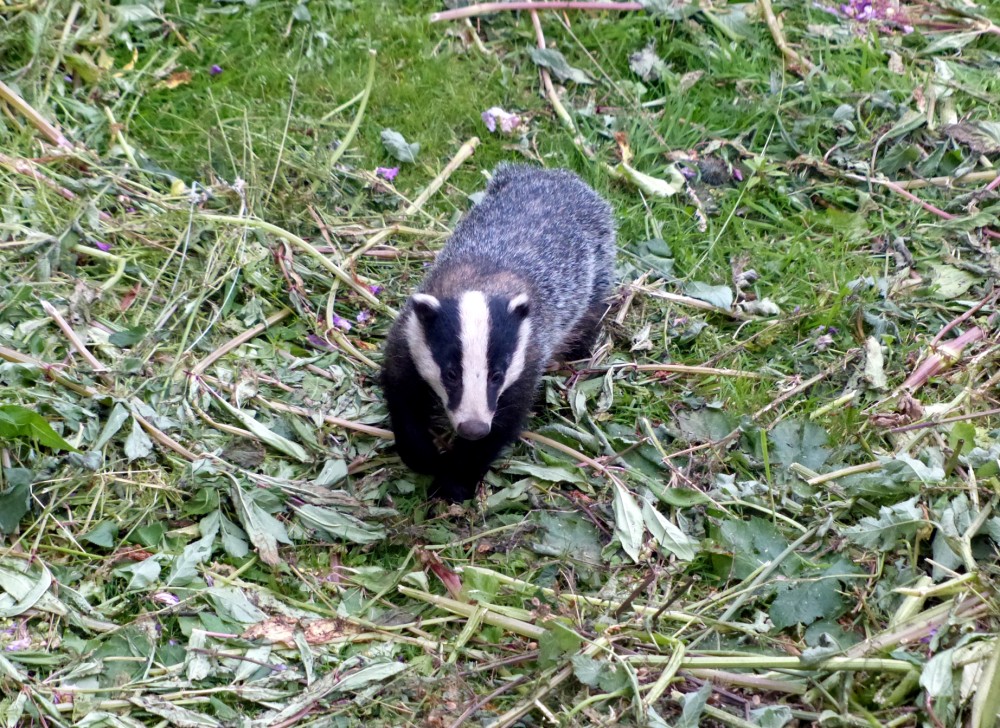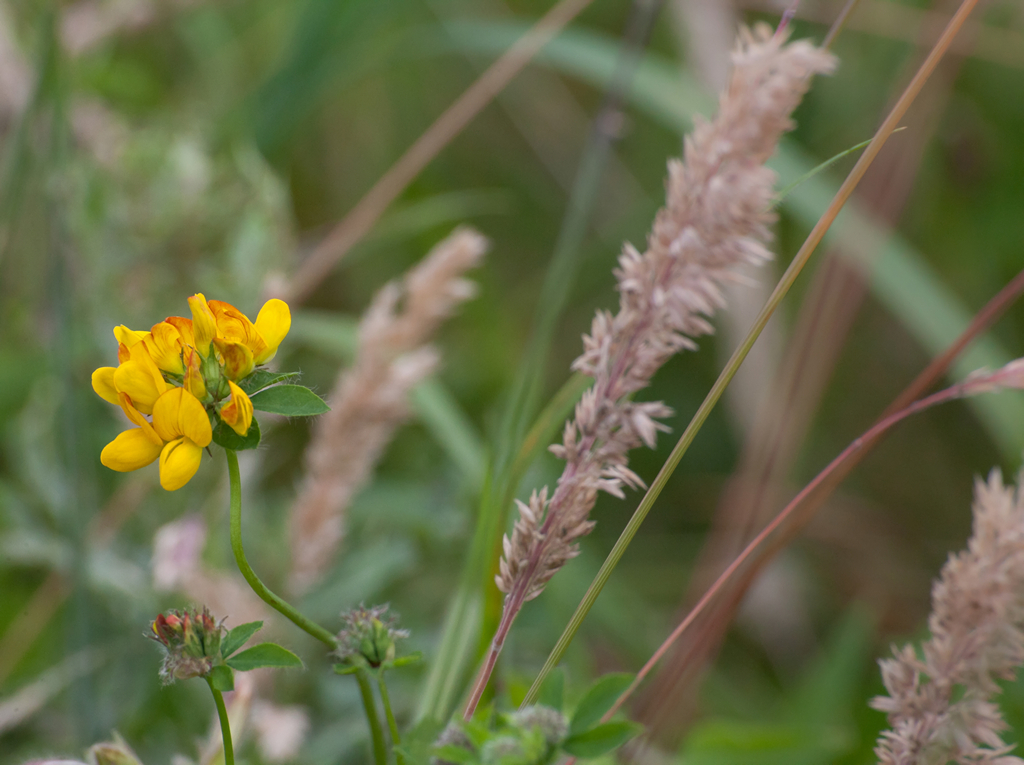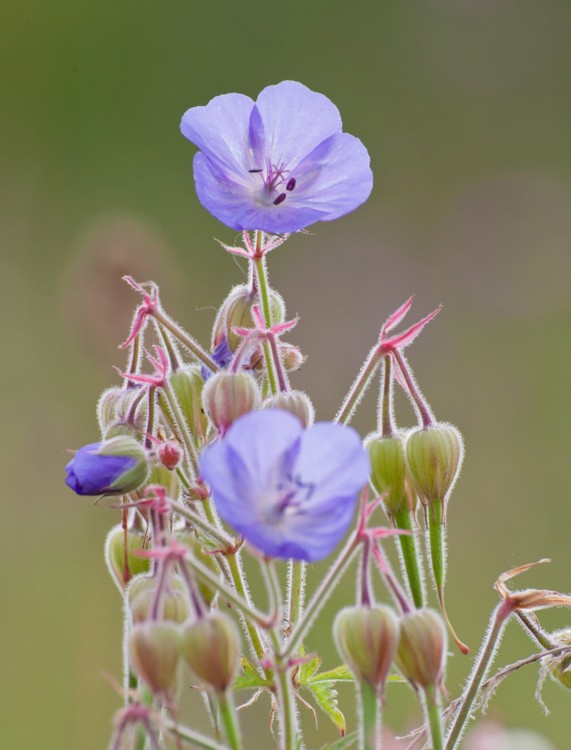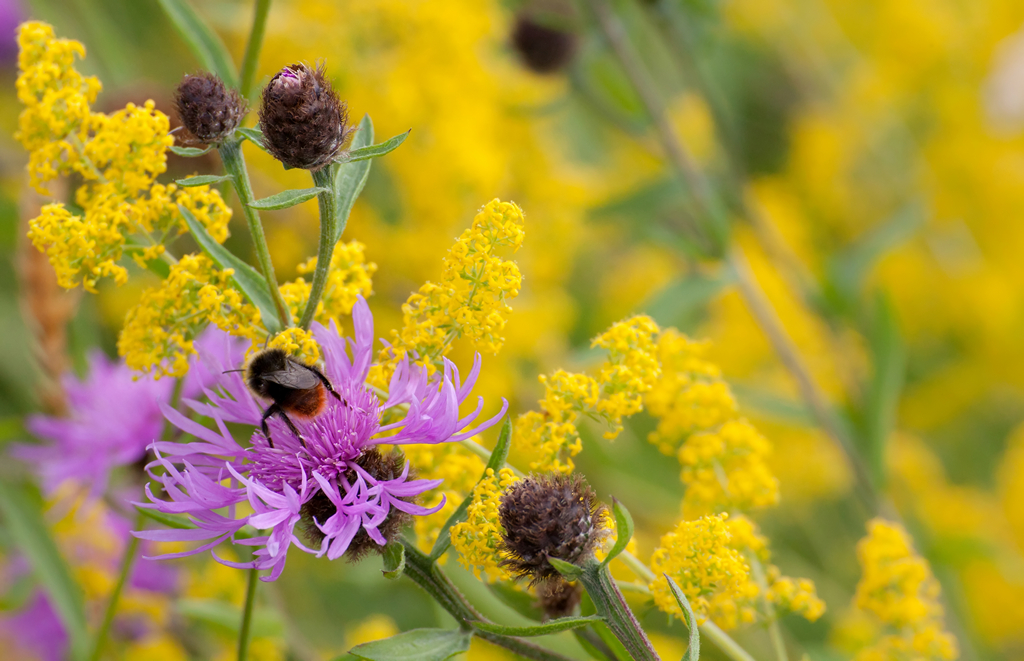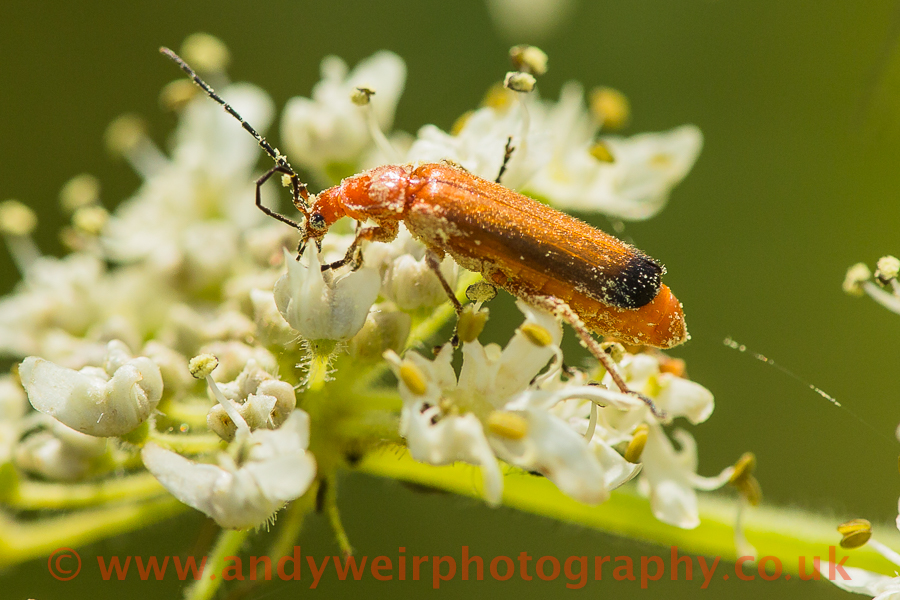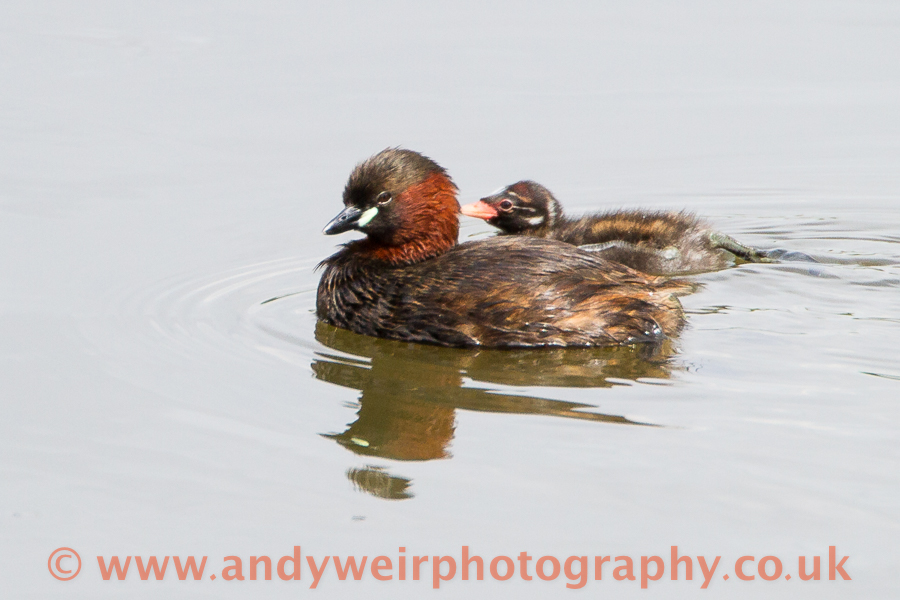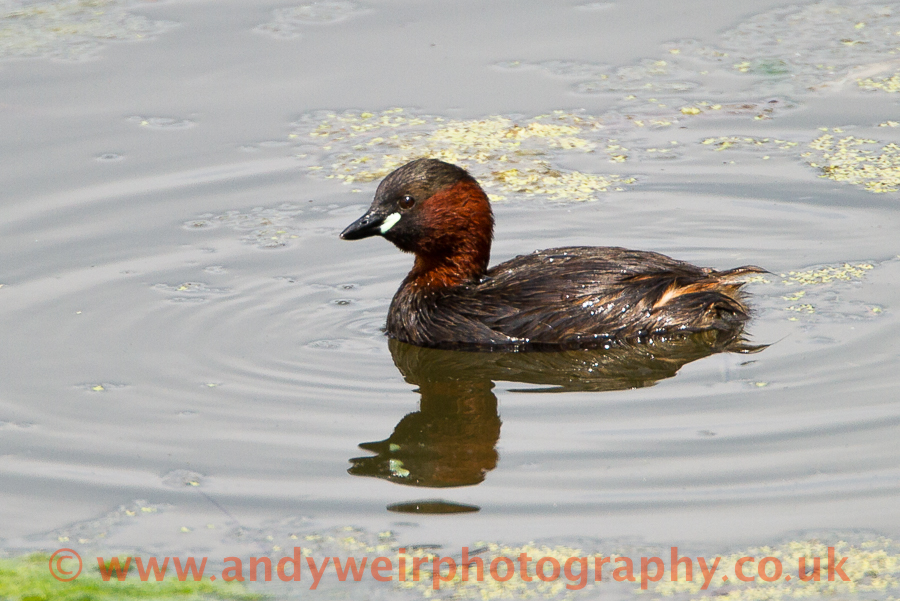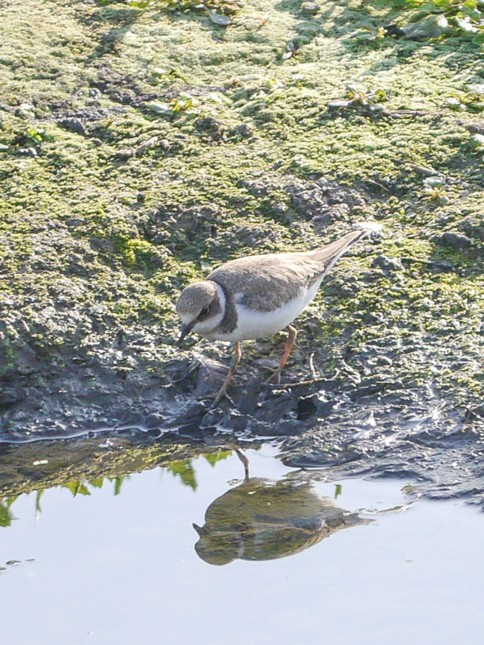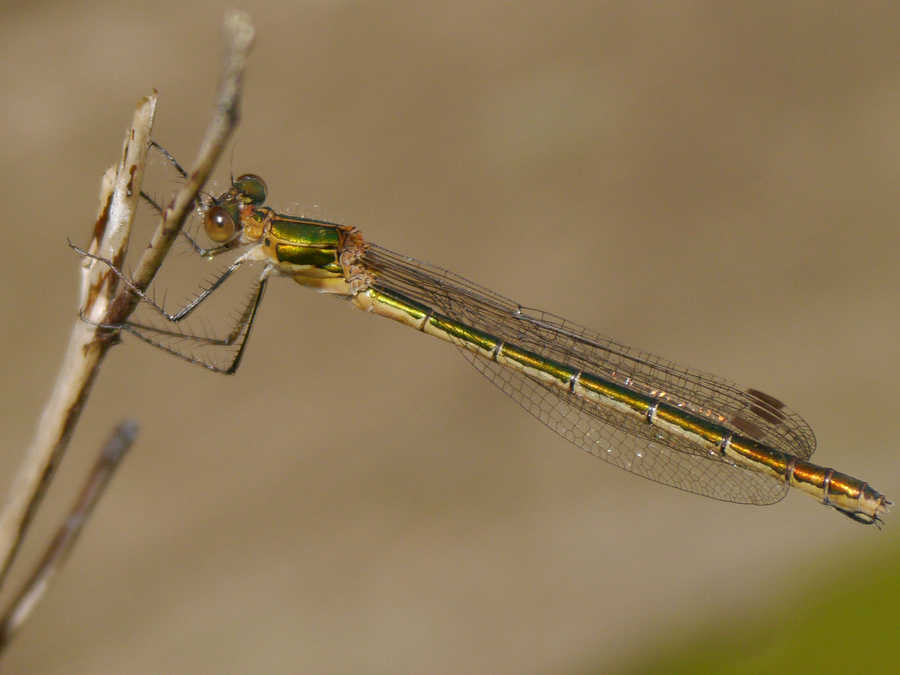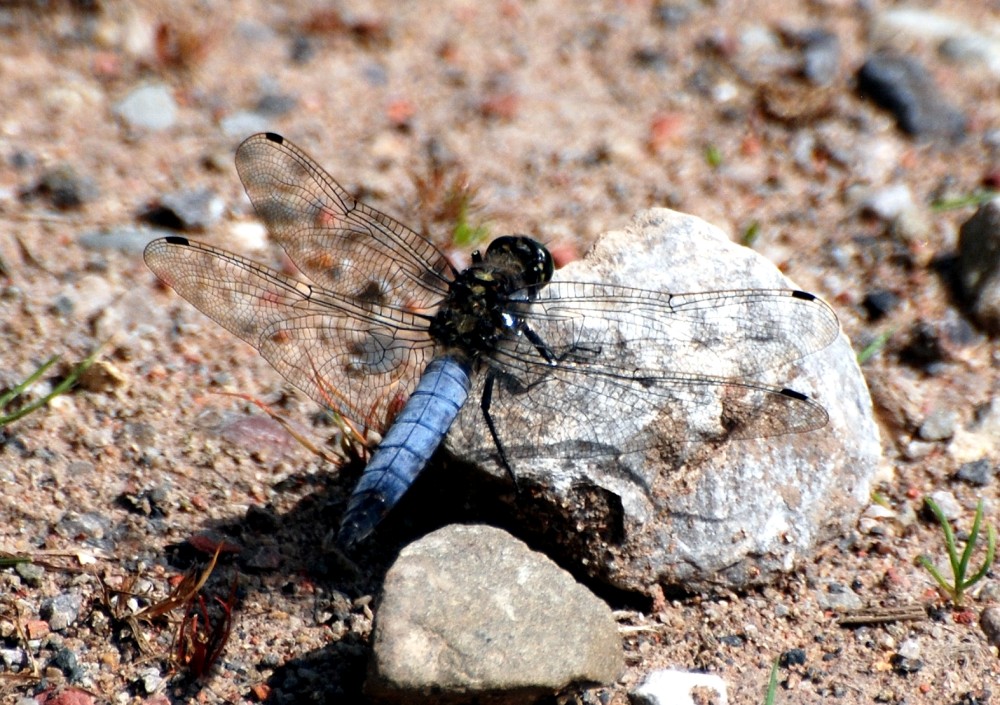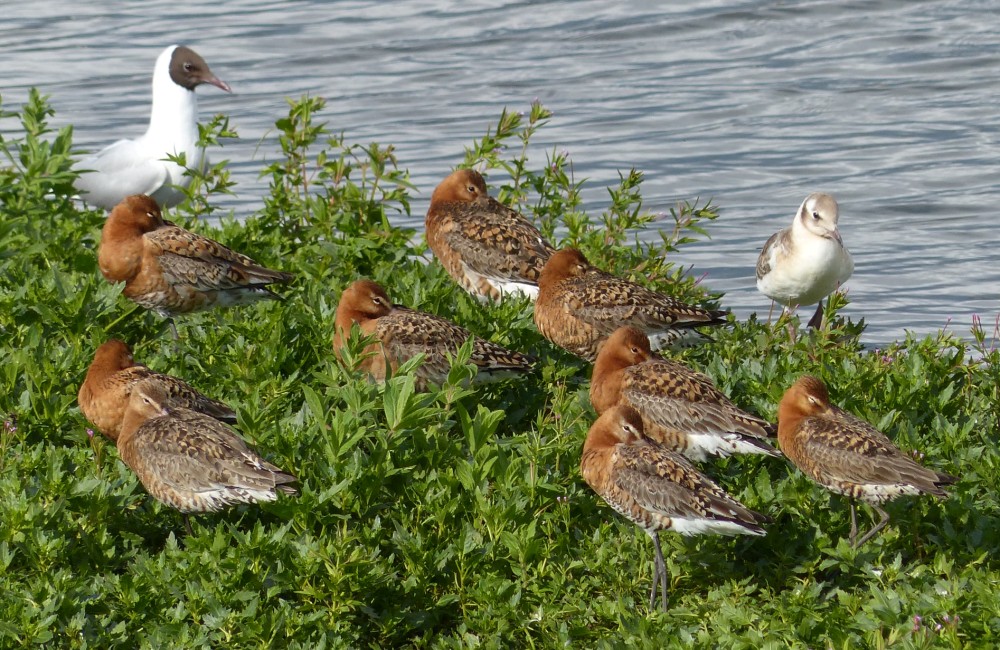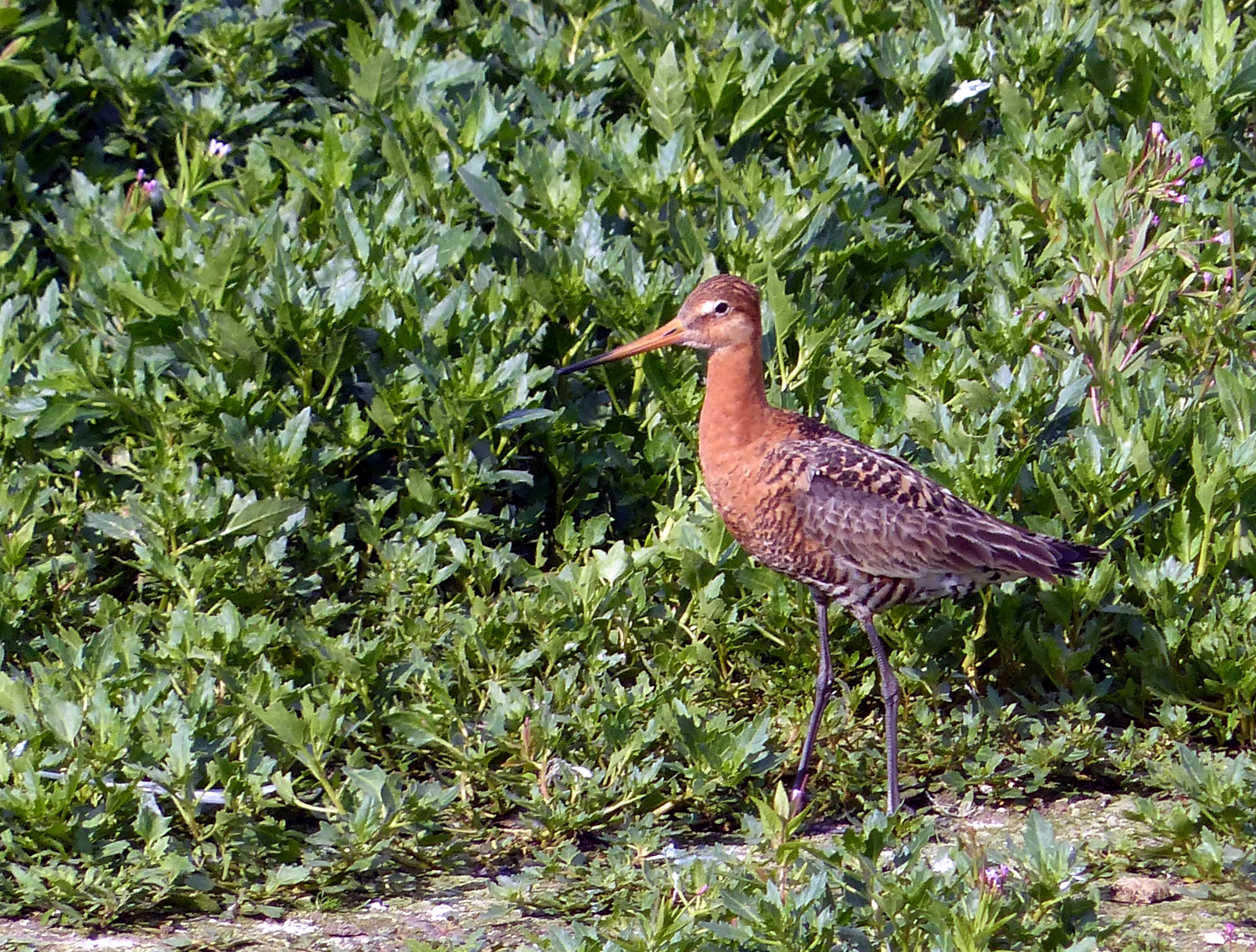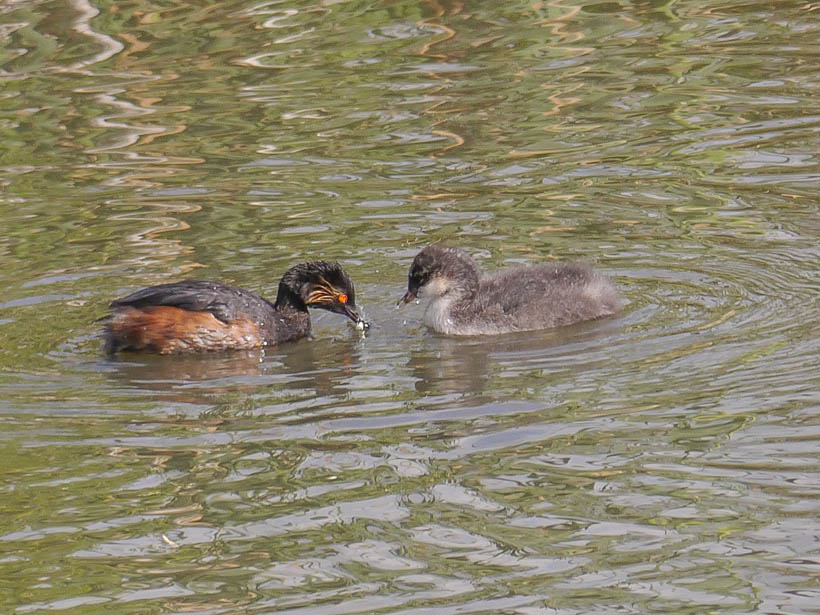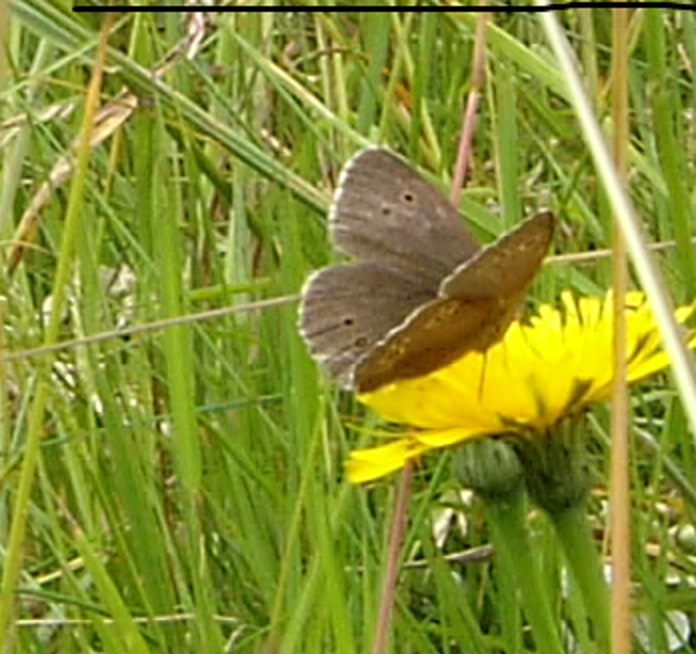Woolston Eyes Monthly Sightings
2014-07-27
On No1 bed, Dave Riley was ringing on Monday (with Mike Baron), Wednesday evening (with John Blundell and Mike), Thursday morning (again with John and Mike) and Saturday morning (alone). The Monday session produced 59 new birds with 49 warblers amongst them, including 8 Sedge and 12 Willow, amongst the other birds was the first Goldfinch of the year for the bed. The Wednesday evening was an attempt to catch Swallows going to roost with 10 caught along with the first two Sand Martins of the year while the Thursday morning resulted in 99 new ringed, with 4 Garden Warblers amongst the highlights, numbers were provided by 10 Chiffchaffs, 12 Willow warblers, 18 Blackcaps and 17 Reed Warblers. The final session of the week was only for three hours, from 09.00 to 12.00, with the four nets catching 44 birds including 41 new, again, a large proportion of these (38) were warblers with another two Garden warblers, three each of Sedge warbler and Whitethroat, six Reed Warblers, seven each of Chiffchaff and Willow Warbler along with 10 Blackcaps. four Willow Tits was a good result for the week, while other tit species seem to have had a poor breeding season on the bed with very low numbers of Blue, Great and Long-tailed being caught. Sightings during the session included regular Water Rail and what is probably the first record of House Sparrow for the bed!
Mike Miles had two sessions of clearing Himalayan Balsam during the week, while doing this he set three nets and over the two days caught 119 birds with the 114 new dominated by 55 Greenfinches, also amongst the catch was the second Garden Warbler of the year for the bed with 4 Jays and 3 Garden Warblers. Kieran Foster had his first attempt at catching Swallows for the year resulting in 64 birds being ringed out of a roost of approx. 300. During the Saturday morning, they were joined by Margaret Rawlins and Jason Atkinson and caught 250 birds with 204 new. Of the new birds, 154 were warblers, headed by 70 Reed Warblers and 41 Blackcaps and a further 3 Garden Warblers were ringed. Amongst the 15 warblers already wearing rings was a British control Reed Warbler. It is late July and Reed Warbler migration has already started so this adult male may be a passage bird from a breeding site further north. They ended the week with 514 captures (383 new , 130 retraps and 1 British control).
Other sightings during the week included: Several Badgers were again showing well in front of the Morgan Hide on 23rd when a small Swallow roost, of about 350 birds, had formed, along with c.50 roosting Starlings. A second bat survey on No.3 bed was also carried out, locating c.12 Soprano Pipistrelles, 3 Common Pipistrelles, 3 Noctules and 1 possible Daubenton’s Bat. On 24th, Dave Hackett carried out his butterfly survey and comments as follows “The hot weather has resulted in large numbers of butterflies across the reserve. The highlight has to be the Clouded Yellow found on No.1 bed today, the first sighting at Woolston since 2006. An emergence of Peacocks produced a reserve total of 286 of which over 80 were on the buddleias on the south bank of No.3 bed. 66 Common Blues was a good count but Gatekeepers and Meadow Browns were less plentiful than might have been expected with totals of 591 and 142 respectively. Purple Hairstreaks have been seen on the south bank of No.3 bed and on the Oak Trees at the entrance to the footbridge with a total of 7 so far.”
Dave Bowman and Friends were on bed Nos 1and 3 on 26th and the following sightings were reported: 23 Black-necked Grebes (9 adults and 14 juveniles per B. Martin), 2 Water Rails, 2 Snipe, 2 Ruddy Ducks, 2 Kingfishers, 20 Swifts and a juvenile Teal (all No3 bed). On No.1 bed the highlights were: a Clouded Yellow (possibly two), 224 Common Blues, 95 Peacocks, 116 Gatekeepers, 55 Meadow Browns, 3 Painted Ladies, 2 Speckled Woods, 1 Large Skipper, 42 Small Whites, 5 Large Whites, 14 Green-veined Whites, 2 Small Coppers, 6 Small Tortoiseshells, 2 Red Admirals, 2 Commas and 14 Small Skippers. Dragonflies for the day included: 5 Emperors, 4 Brown Hawkers, 1 Migrant Hawker, 32 Ruddy Darters, 4 Four-spotted Chasers, 5 Black-tailed Skimmers, 7 Red-eyed Damselflies, 2 Emerald Damselflies and scores of the commoner Damselflies.
Submitted by: Dave Riley
2014-07-20
Dave Riley was on No1 bed on the Tuesday, Thursday and Sunday, when he was joined by John Blundell. During the three session 136 new birds were ringed including a Garden Warbler, good numbers of other warblers included 31 Chiffchaffs,11 Willow Warblers, 21 Blackcaps, 6 Whitethroats, 20 Reed Warblers and 14 Sedge Warblers. the commoner tits seem to be in short supply, with only 3 Blue Tits, 1 Great Tit and 1 Long-tailed Tit ringed. The only sightings of note during the session were of 4 Water Rails on 15th and a Goldcrest on 17th.
On No3 bed, ringing took place on Thursday morning when Mike Miles was joined by Hugh Pulsford and his trainee Tom Squires. They caught 92 (66 new and 26 retraps), the catch included 6 species of Warbler, including a juvenile Willow Warbler presenting with severely crossed mandibles in the vertical plane. There are currently large numbers of juvenile Greenfinches moving around the bed and it appears to have been a good breeding season for them. On the Saturday morning Mike was joined by Kieran Foster and they ran just 4 nets in order to give a ringing demonstration to a visiting group. They packed up at 8 am when the rain was imminent, but made 31 captures, the 10 new birds included their 4th Magpie of the year. Sightings during the session included a Greenshank and 6 Snipe on the Saturday.
On 14th 220 Gadwall and 45 Coot were out on the water of no3 bed while 160 Swifts were skimming low until they were scattered by a hunting Hobby. Four Little Ringed Plovers were still on the scrape in front of the hide and dusk a Tawny Owl perched in front of the Morgan hide. 2 Kingfishers, 269 Gatekeepers and 70 Meadow Browns were counted together with 7 Commas,5 Red Admirals, 11 Small Skippers and a Large White (all 15th), 2 Green Sandpipers, 1 Oystercatcher and 1 Grasshopper Warbler (all 18th).
Submitted by: Dave Riley
2014-07-13
Dave Riley was joined John Blundell and Mike Baron on the Monday evening for an attempt at catching Swallows and were rewarded with a pre-roost flock of 550 flying of the reed bed, unfortunately they headed off west to roost elsewhere, leaving just a single bird in the net. Dave and Mike stayed overnight and on the Tuesday, 54 birds were caught with 39 new including the first Jay of the year for the bed, 4 Sedge Warblers and 12 Blackcaps. Amongst the retraps was a Bullfinch first ringed on 30th April 2010 Sightings during the morning included six Water Rails squealing in the reed beds.
On No3 bed, ringing took place on Wednesday and Friday afternoons along with the Saturday morning. In the two afternoon sessions, Mike ran just the two nets at the feeders making 73 captures ( 32 new and 41 retraps ) with no surprises. In the morning session Mike was joined by Kieran Foster and Margaret Rawlins. They caught 134 birds (90 new and 34 retraps) amongst the new birds were their first juvenile Sedge Warblers of the year and also their first ever juvenile Stock Dove. There were no noteworthy retraps and no sightings of interest during the session.
Other sightings during the week included a Kingfisher (7th), 4 Little Ringed Plovers, at least 9 Black-tailed Godwits, 1 Common Tern (8th), 3 Kingfishers, a male Peregrine and a Common Sandpiper (12th), on the same day dragonflies seen included 6 Emperor Dragonflies, c.10 Black-tailed Skimmers, 12 Brown Hawkers, 4 Ruddy Darters, 3 Red-eyed Damselflies and 12 Emerald Damselflies.
Submitted by: Dave Riley
2014-07-06
Dave Riley was on No1 bed on the Tuesday, when he was joined by Mike Baron, and on the Saturday. The first of these two sessions was the better, with 56 birds caught, 48 new including the first Sedge Warbler, an adult female, of the year for the bed, other highlights were 12 Chiffchaffs and 6 Reed Warblers, amongst the previously ringed birds was a British control Reed Warbler. The Saturday morning started off with rain until 06.30 and 26 birds were caught, amongst the 19 new were the first juvenile Whitethroats (3) and juvenile Reed Bunting (1) of the year.
Kieran Foster had a surprisingly quiet session on No3 bed on the Saturday with nine birds caught, with four new, although that did include a Stock Dove. Amongst the retraps was a Blackbird originally ringed on 15th September 2007, and a Stock Dove.
Sightings included: The first gatekeepers on the wing with 29 counted across the reserve, 128 Meadow Brown, 8 Speckled Wood, 51 Small Skipper, 2 Red Admiral,5 Comma, 9 Small Tortoiseshell, 2 Common Blue and a Large Skipper. However the highlight of the day was a Ringlet on No.2 bed, the first ever recorded at Woolston. On No.3 bed were 3 Black-tailed Godwits in full breeding plumage (all 1st), Little Ringed Plover (3rd), 12 broods of Black-necked Grebes and 1 Kingfisher (both 6th).
Submitted by: Dave Riley
2014-07-26
A Reed Warbler below the John Morgan Hide provided a good photo opportunity today
Submitted by: David Spencer
2014-07-26
On a roasting hot day we made an early start on No.3 bed, where sightings included: 23 Black-necked Grebes (9 adults and 14 juveniles per B. Martin), 2 Water Rails, 2 Snipe, 2 Ruddy Ducks, 2 Kingfishers, 20 Swifts and a juvenile Teal. Then onto No.1 bed for a butterfly survey. Highlights of this were: a Clouded Yellow (possibly two), 224 Common Blues, 95 Peacocks, 116 Gatekeepers, 55 Meadow Browns, 3 Painted Ladies, 2 Speckled Woods, 1 Large Skipper, 42 Small Whites, 5 Large Whites, 14 Green-veined Whites, 2 Small Coppers, 6 Small Tortoiseshells, 2 Red Admirals, 2 Commas and 14 Small Skippers. Dragonflies for the day included: 5 Emperors, 4 Brown Hawkers, 1 Migrant Hawker, 32 Ruddy Darters, 4 Four-spotted Chasers, 5 Black-tailed Skimmers, 7 Red-eyed Damselflies, 2 Emerald Damselflies and scores of the commoner Damselflies.
Cheers David (with Dave Steel, David Spencer, Paul Hazelhurst, Les Jones, Ste Dodd, George Dunbar, Jane Cullen, Helen Allan and her friend Kelly)
Submitted by: David Bowman
2014-07-24
The hot weather has resulted in large numbers of butterflies across the reserve. The highlight has to be the Clouded Yellow found on No.1 bed today, the first sighting at Woolston since 2006. An emergence of Peacocks produced a reserve total of 286 of which over 80 were on the buddleias on the south bank of No.3 bed. 66 Common Blues was a good count but Gatekeepers and Meadow Browns were less plentiful than might have been expected with totals of 591 and 142 respectively. Purple Hairstreaks have been seen on the south bank of No.3 bed and on the Oak Trees at the entrance to the footbridge with a total of 7 so far. There have been good numbers of Gadwall on No.3 bed with 329 on the evening of the 21st whilst 155 Coot were counted there on the 23rd. Black-necked Grebes continue to show well with their young and a male Ruddy Duck has been seen regularly.
Submitted by: Dave Hackett
2014-07-23
After two failed attempts the Great-crested Grebes on the weir basin have two young. Photograph of one of the adults
Submitted by: David Spencer
2014-07-23
Several Badgers were again showing well in front of the Morgan Hide last night. A small Swallow roost, of about 350 birds, has now formed, along with c.50 roosting Starlings. We also completed our second bat survey on No.3 bed, locating c.12 Soprano Pipistrelles, 3 Common Pipistrelles, 3 Noctules and 1 possible Daubenton’s Bat.
Cheers David (along with Dave Steel, David Spencer, Kenny McNiffe, Ste Dodd, Helen Allan and George Dunbar)
Submitted by: David Bowman
2014-07-20
Cinnabar moth (Tyria jacobaeae) caterpillar on Ragwort on canal bank.
Submitted by: Andy Weir
2014-07-20
No.3 bed 15 adult and 16 young Black-necked grebes,8 of which full grown and independent. 10 adult Little grebes and 4 well grown young being fed by single adults.Best showing for many years.Three broods of Great crested grebe.Two drake Ruddy Duck one of which again attached to an adult Great crested Grebe.Two broods of Tufted Duck one with 5 well grown young the other a new brood of 6 tiny young in channel opposite the Morgan hide.One Snipe and a brief visit of a Green Sandpiper to mud in front of Morgan hide.14 Lapwing and 20 swifts feeding over north east bank.
Submitted by: Brian Martin
2014-07-19
Photograph of 2 Snipe feeding in front of the Frank Linley hide this afternoon. Earlier 6 were reported from the same spot together with 1 Greenshank and 3 Little Ringed Plover.
Submitted by: David Spencer
2014-07-18
No.3 bed On fairly brief period of watching found 11 adult and 11 young Black-necked Grebes.On south pool 3 broods of Little Grebes 1,1 and 2 young. Flushed 2 Green Sandpipers from mud in front of south platform and permit holder reported 3 Little ringed plovers and an Oystercatcher. an adult Shelduck with 10 nearly full grown young.Mute Swans now have only one surviving young.A Grasshopper Warbler reeling near path between Linley and Rotary hide. During a recent insect survey by Phil Brighton a hoverfly new to Cheshire was discovered.It is a very small hoverfly that was only added to the British list in 1981.
Submitted by: Brian Martin
2014-07-15
After a cloudy morning the sun emerged at lunchtime to give a very pleasant afternoon. Lots of wildfowl including 118 Mallard and several new broods notably at the locks and on No.2 bed. There were 2 Kingfishers on the canal including one at Latchford Locks. 26 Mute Swans were present and 3 broods; the pair on No.3 bed with 2 well-grown young, one at the locks with 1 small young and a pair at Bollin Point with a large young. There are other pairs near the weir and on the loop of No.4 bed but no young as yet. Coot are particularly numerous on No.3 bed and I counted 99 and 10 young across the reserve. Black-necked Grebes were feeding growing young on No.3 bed and one adult had a small young on its back in front of the Rotary Hide. Seven broods were seen and also on No.3 bed were 2 Little Ringed Plover. Because of the cloudy conditions in the morning butterfly totals were lower than expected but 269 Gatekeepers and 70 Meadow Browns were counted together with 7 Commas,5 Red Admirals, 11 Small Skippers and a Large White.
Submitted by: Dave Hackett
2014-07-14
Went onto No.3 bed this evening, mainly planning to do a bat survey. Arrived to find two young badgers foraging in front of the Morgan Hide and they stayed in view for the whole evening. 220 Gadwall and 45 Coot were out on the water and 160 Swifts were skimming low until they were scattered by a hunting Hobby. Four Little Ringed Plovers were still on the scrape in front of the hide. At dusk a Tawny Owl came in to land on top of the feeders, scaring the life out of one of the badgers. Then did a wander round the bed and counted 12 Soprano Pipistrelles and 3 Daubenton’s Bats. Altogether, a really pleasant evening.
Photo of one of the badgers.
If you want to see a video of the badgers, click on the ‘Articles’ tab at the bottom of this page open ‘Badgers at Woolston Eyes July 2014’ and click on the link highlighted. Alternatively, visit Youtube and paste the following into your browser: https://www.youtube.com/watch?v=wT7VYNKtJzk&feature=youtube_gdata
Cheers David
Submitted by: David Bowman
2014-07-13
Birds Foot Trefoil (Yellow Wildflower) South Meadow, No3 Bed.
Submitted by: David Waterhouse
2014-07-13
Bee (Bombus Lapidarius) on Thistle, with Ladies Bedstraw in the background (Yellow Wildflowers)
Submitted by: David Waterhouse
2014-07-13
Blue-Tailed Damselfly
Spotted about 8 of these on the path leading into no3 bed.
Submitted by: David Waterhouse
2014-07-13
No.3 bed:Black-necked Grebes-14 adults and 15 young,3 of which full grown and independent.Most of others near full grown but still being fed.The last brood from 3rd July still has 2 young but one much smaller than other and not being fed much,the larger chick kept chasing it off.In all,at least 11 broods seen. Three drake Ruddy Duck including one that had latched itself on to an adult Great crested Grebe,following the grebe everywhere! 3 Little ringed plovers-all juveniles.Three broods of Little Grebes,5 adults and 3 young.Great crested Grebe: four broods with single well grown young,total of 8 adults. Two broods of well grown Shelduck,one of 8 the other of 10 young. Gadwall brood of 6 half grown young.Fifty plus Gadwall and a Pochard brood of four half grown young.
Submitted by: Brian Martin
2014-07-13
No.3 bed:Black-necked Grebes-14 adults and 15 young,3 of which full grown and independent.Most of others near full grown but still being fed.The last brood from 3rd July still has 2 young but one much smaller than other and not being fed much,the larger chick kept chasing it off.In all,at least 11 broods seen. Three drake Ruddy Duck including one that had latched itself on to an adult Great crested Grebe,following the grebe everywhere! 3 Little ringed plovers-all juveniles.Three broods of Little Grebes,5 adults and 3 young.Great crested Grebe: four broods with single well grown young,total of 8 adults. Two broods of well grown Shelduck,one of 8 the other of 10 young. Gadwall brood of 6 half grown young.Fifty plus Gadwall and a Pochard brood of four half grown young.
Submitted by: Brian Martin
2014-07-12
On a hot still day, we covered No.3 bed and then the “New Pool” on No.1 bed. Three Little Ringed Plovers, 2 drake Ruddy Ducks, 3 Kingfishers, a male Peregrine and a Common Sandpiper were the most notable birds. Dragonflies included 6 Emperor Dragonflies, c.10 Black-tailed Skimmers, 12 Brown Hawkers, 4 Ruddy Darters,3 Red-eyed Damselflies and 12 Emerald Damselflies.
Photo of a Black-tailed Skimmer from No.1 bed.
Cheers David (with David Spencer, Dave Steel, Paul Hazlehurst, Brian Baird, Helen Allan, George Dunbar and Ste Dodd)
Submitted by: David Bowman
2014-07-08
Photo of a group of today’s Black-tailed Godwits.
To watch a video of the birds click on the ‘Articles’ tab at the bottom of this page, open the ‘Black-tailed Godwits at Woolston Eyes July 2014’ article and click on the link that is highlighted.
Submitted by: David Bowman
2014-07-08
A rewarding few hours on No.3 bed this afternoon produced 12 summer plumaged Black-tailed Godwits, 4 Little Ringed Plovers and a Common Tern, along with plenty of Black-necked Grebes.
Photo of a Black-tailed Godwit from earlier today.
Cheers David
Submitted by: David Bowman
2014-07-06
No.3 bed:3 hours spent carefully monitoring Black-necked Grebes.A remarkable total of 12 broods found.Four seen from the platform on the south bank,three from the Tower hide,three broods from the Morgan hide and two from the Rotary hide.In all,17 adults and 13 young.A brood seen on the north west pool is one that hatched only a few days ago and consists of 2 young.A Lesser black-backed Gull dived towards a BNG chick near the Morgan hide but the grebe submerged quickly and the gull flew off. Four broods of Little Grebes seen - all single young of varying ages and a total of 9 adults.A Kingfisher flew down centre of water towards the Hogg hide then on to the river.
Submitted by: Brian Martin
2014-07-03
Managed a few hours birding on No.3 bed, either side of another Balsam-pulling session. On the plus side, a tenth brood of Black-necked Grebes and on the minus side a Lesser Black-backed Gull gobbling down a well-grown Little Grebe chick. The level of predation by these large gulls, which are now breeding close to the Reserve has been alarming this year, with the Black-headed Gull colony particularly bearing the brunt. Other sighting of interest were: 1 juvenile Little Ringed Plover, 1 Ruddy Duck, 5 Teal, 3 Shoveler, 85 Gadwall, 1 Sparrowhawk carrying prey in the direction of a known nest-site and 45 Swifts.
Other sightings included: 1 Common Hawker, 1 Comma and 4 Red Admirals
Cheers David (with David Spencer, Brian Martin and Brian Baird)
Submitted by: David Bowman
2014-07-01
The first gatekeepers were on the wing and I counted 29 across the reserve. Other butterflies include 128 Meadow Brown, 8 Speckled Wood, 51 Small Skipper,2 Red Admiral,5 Comma, 9 Small Tortoiseshell, 2 Common Blue and a Large Skipper. However the highlight was a Ringlet on No.2 bed, the first ever recorded at Woolston. On No.3 bed were 3 Black-tailed Godwits in full breeding plumage. In all a very successful day! Photo; Ringlet
Submitted by: Dave Hackett




